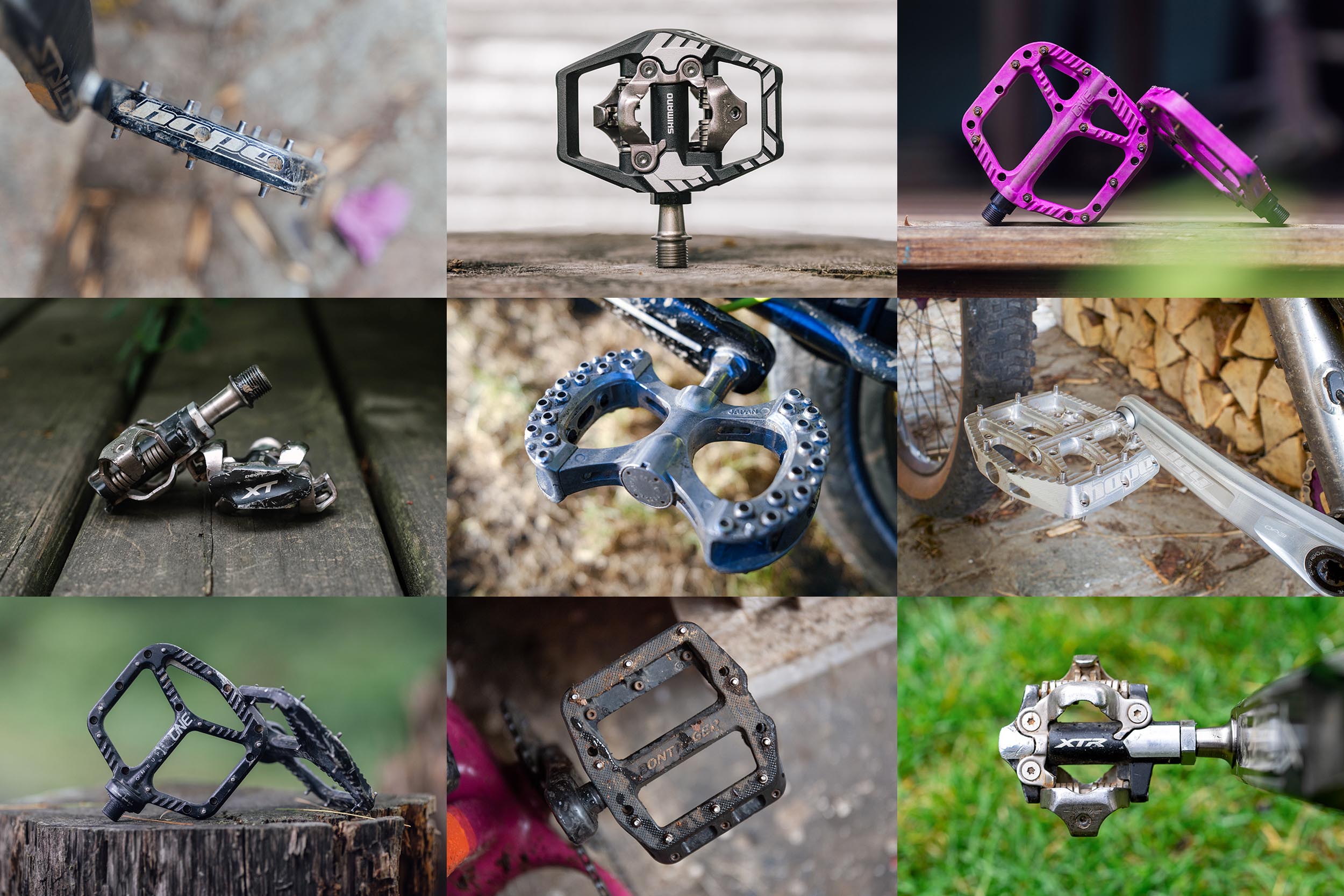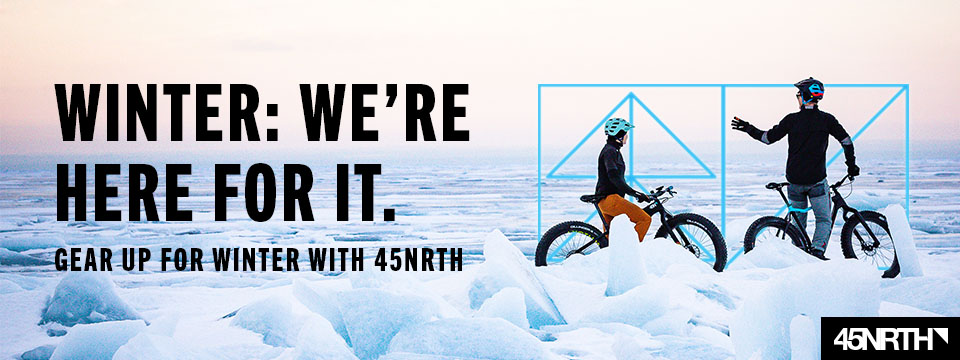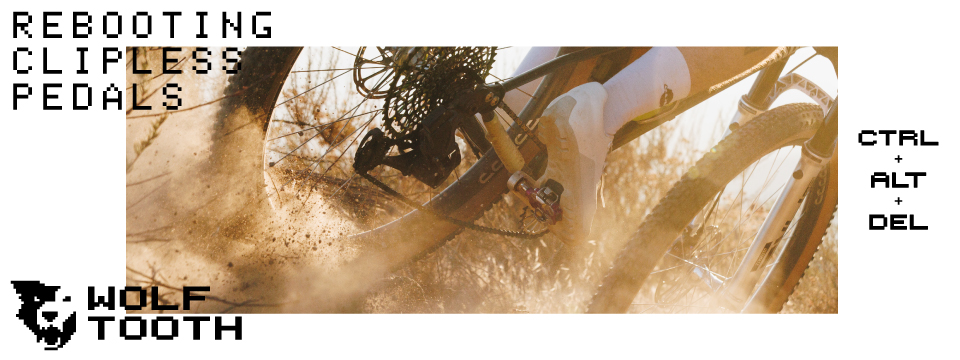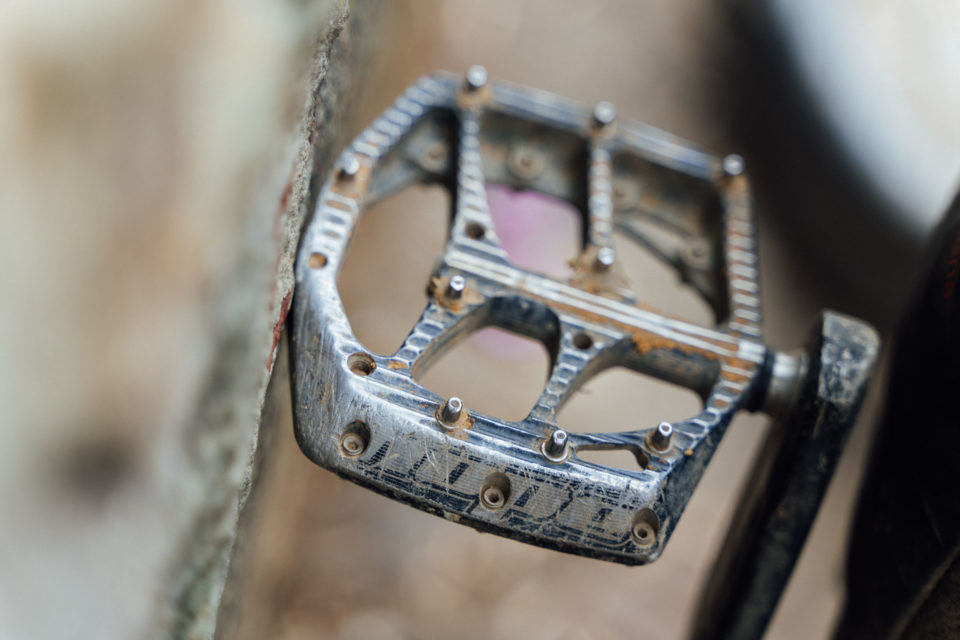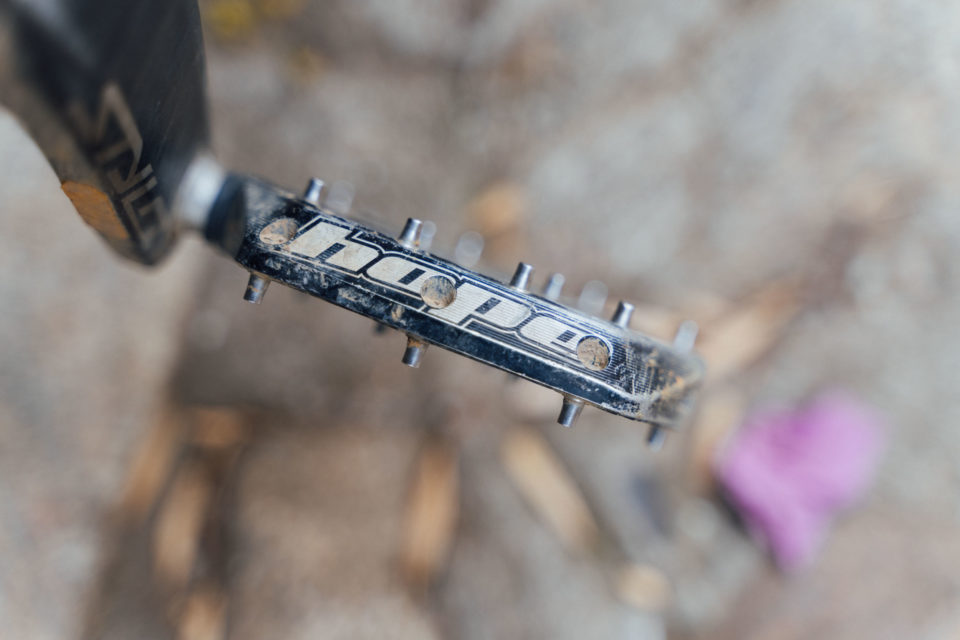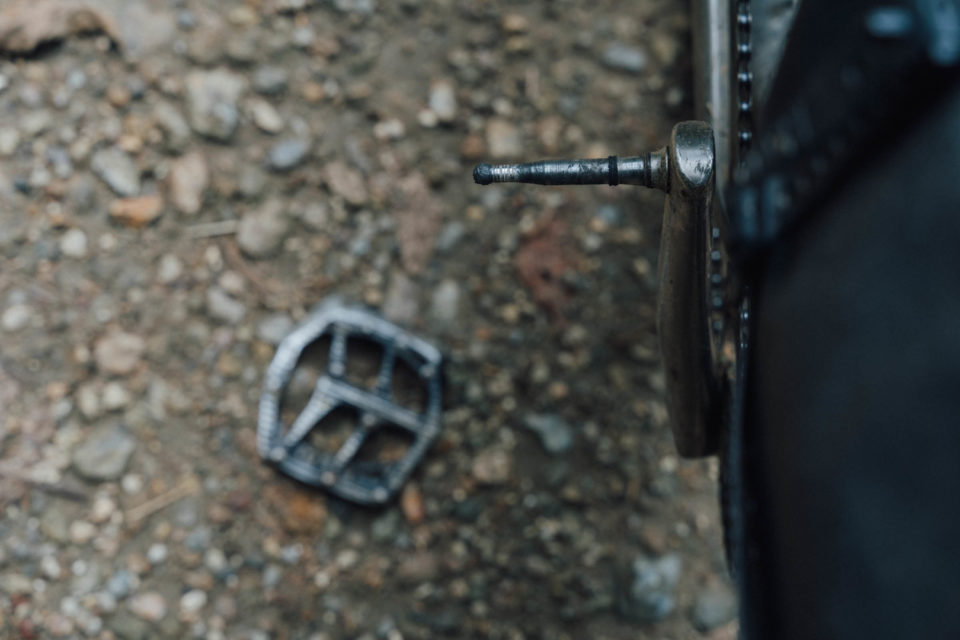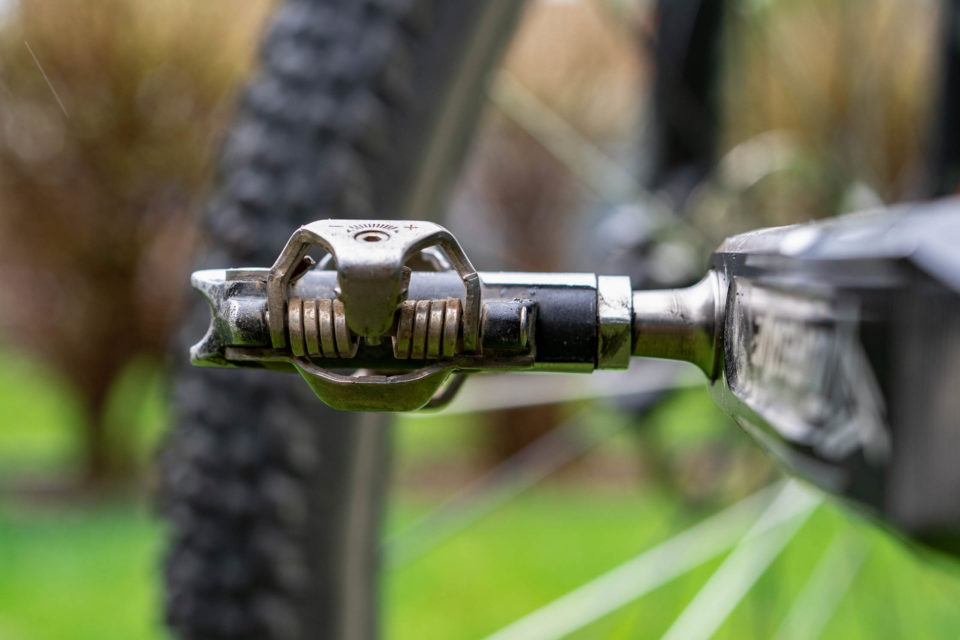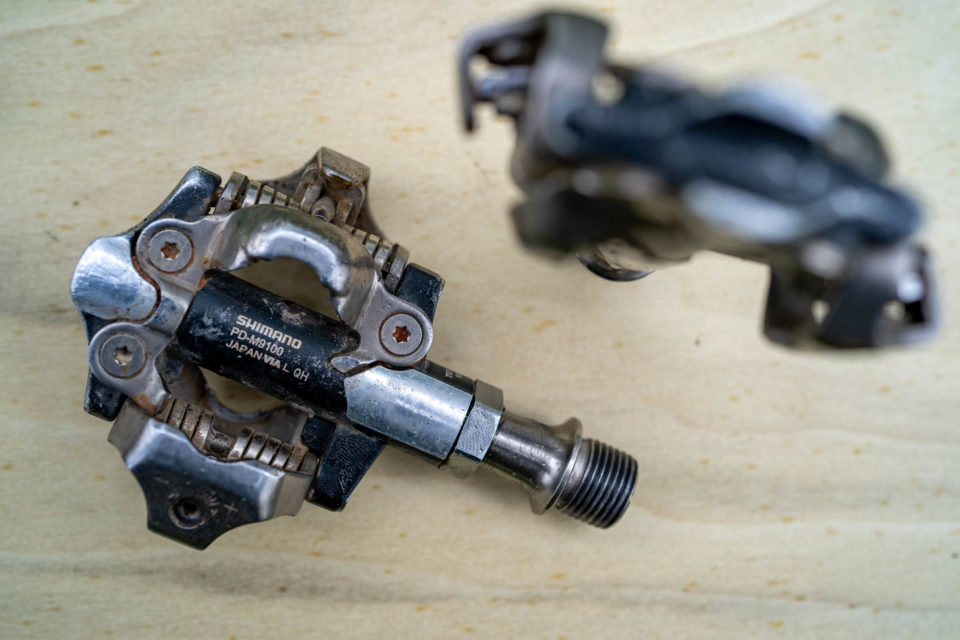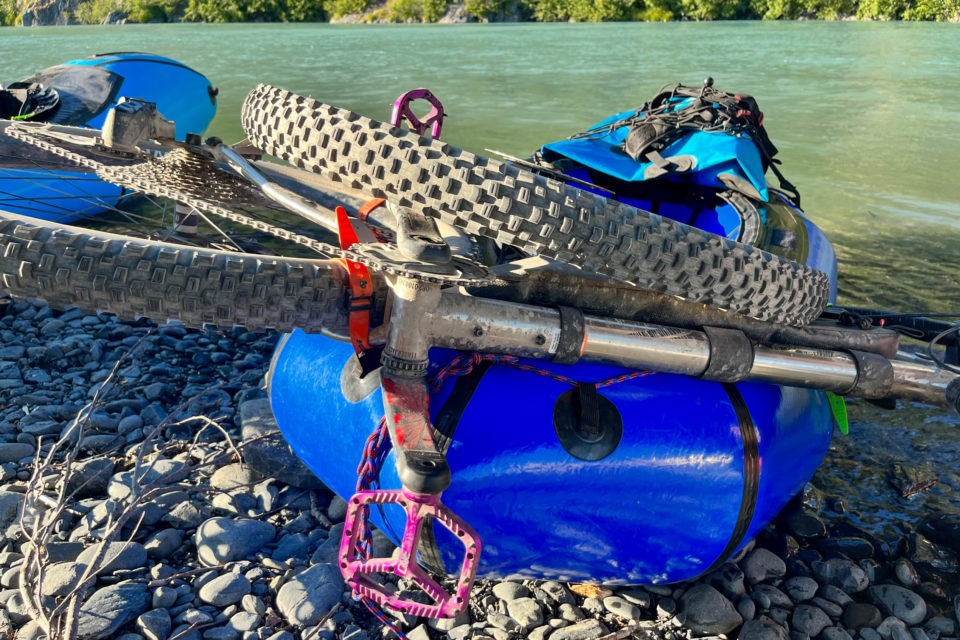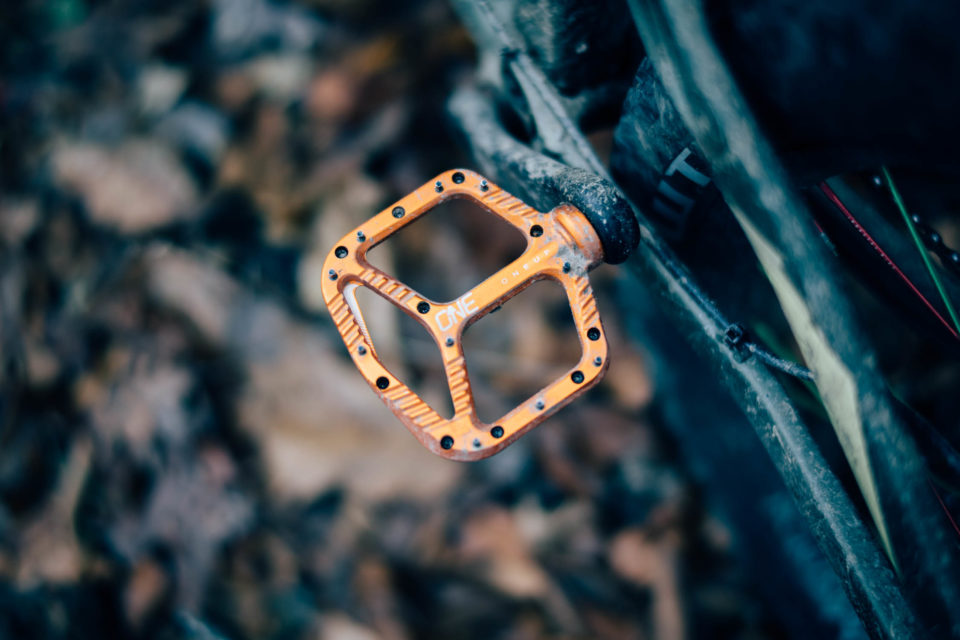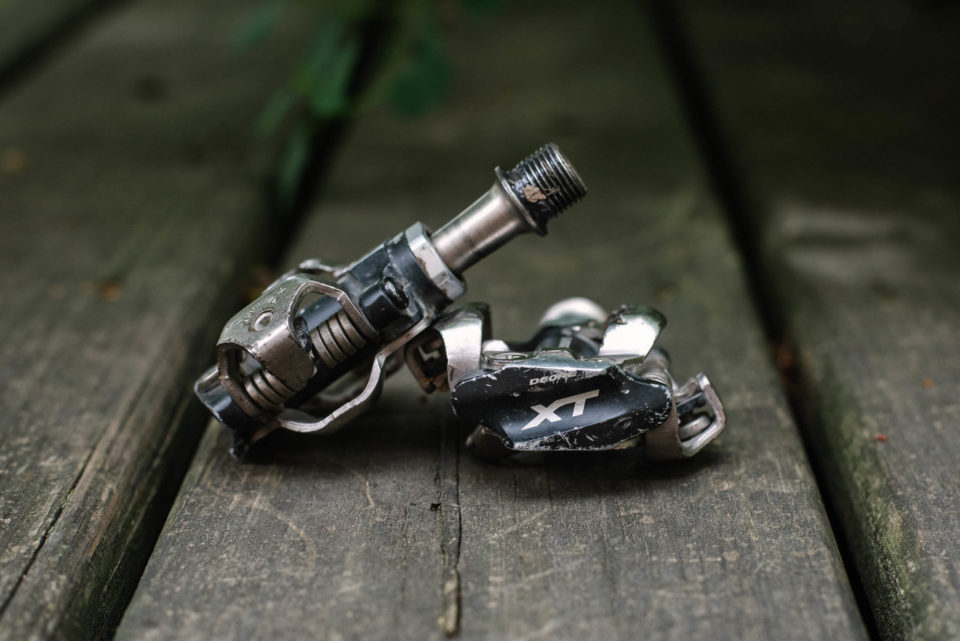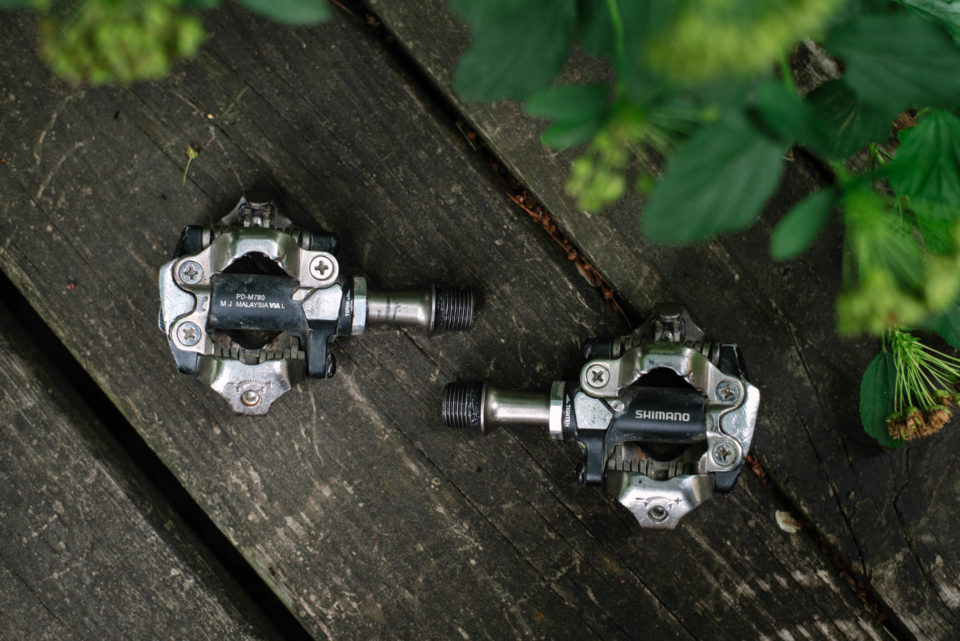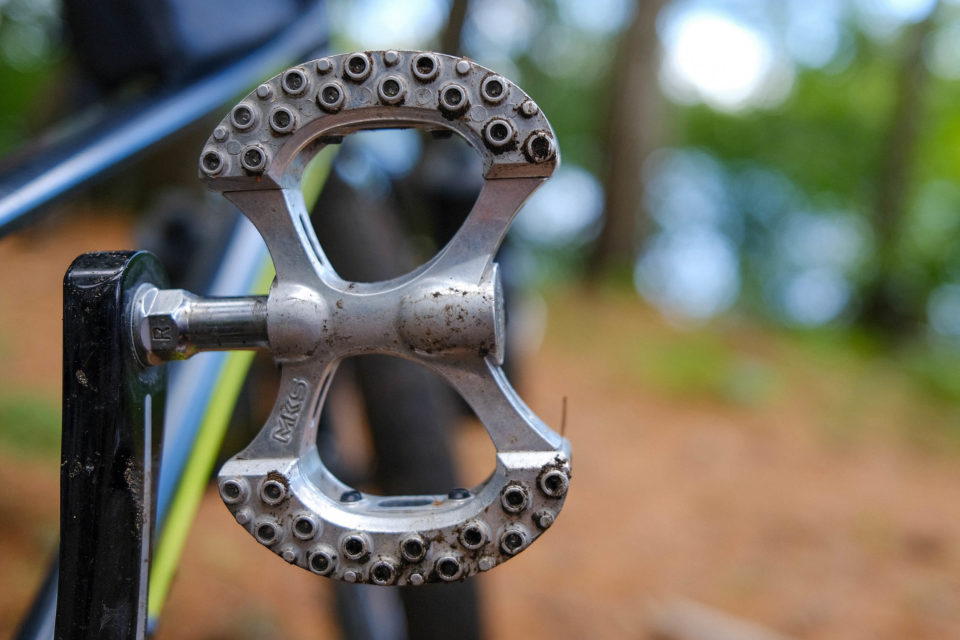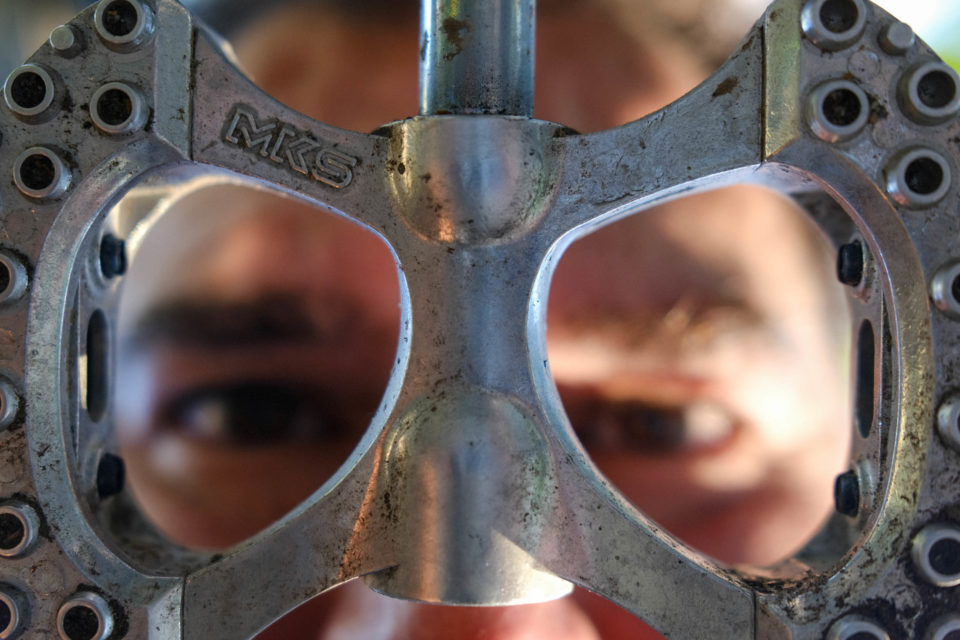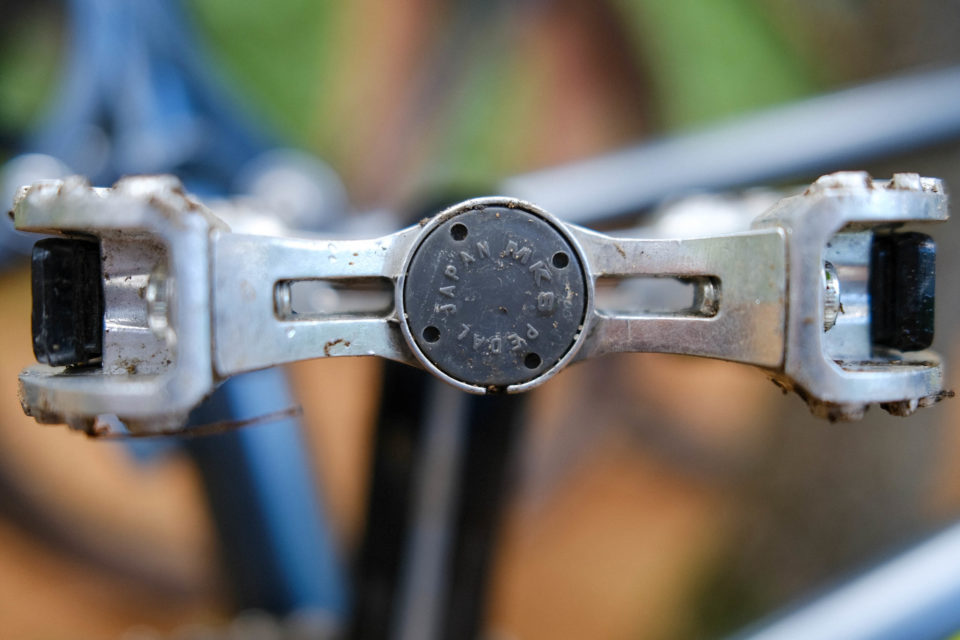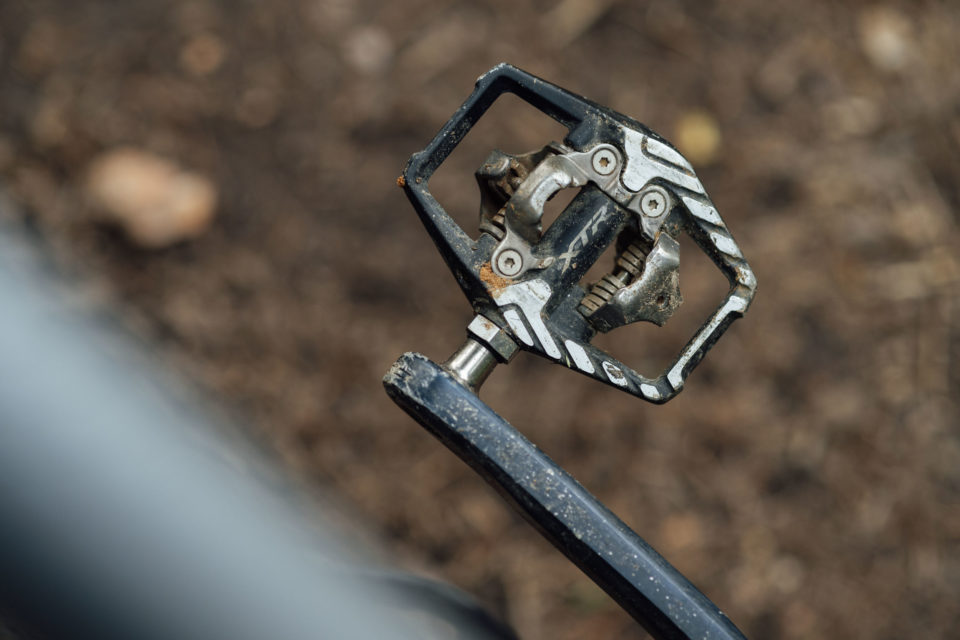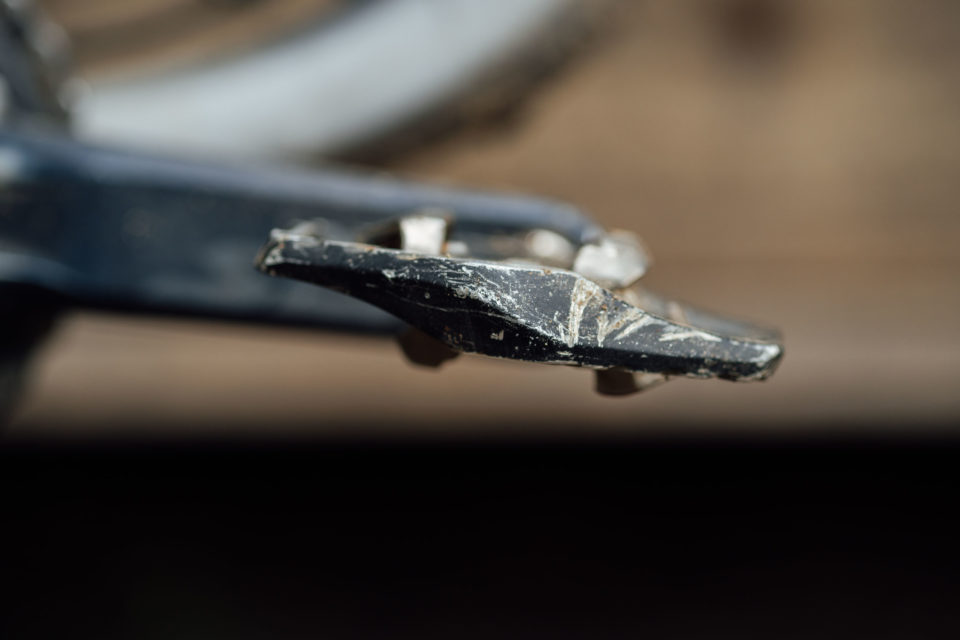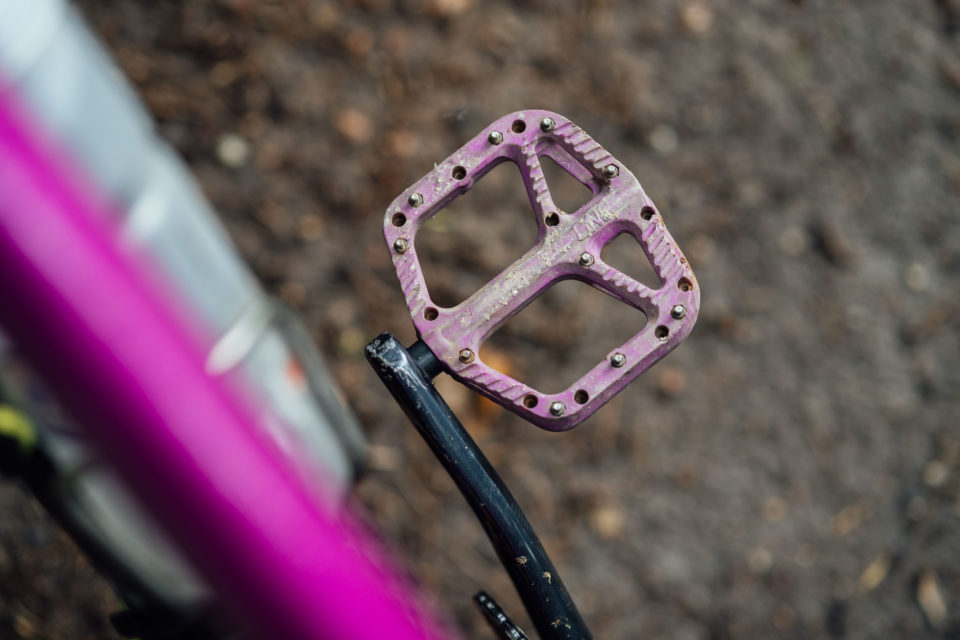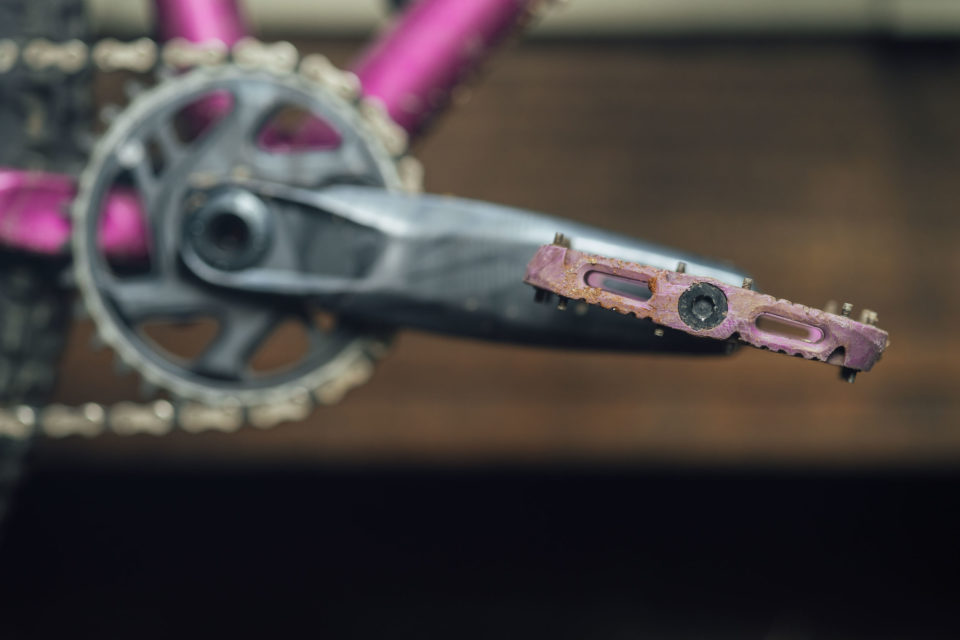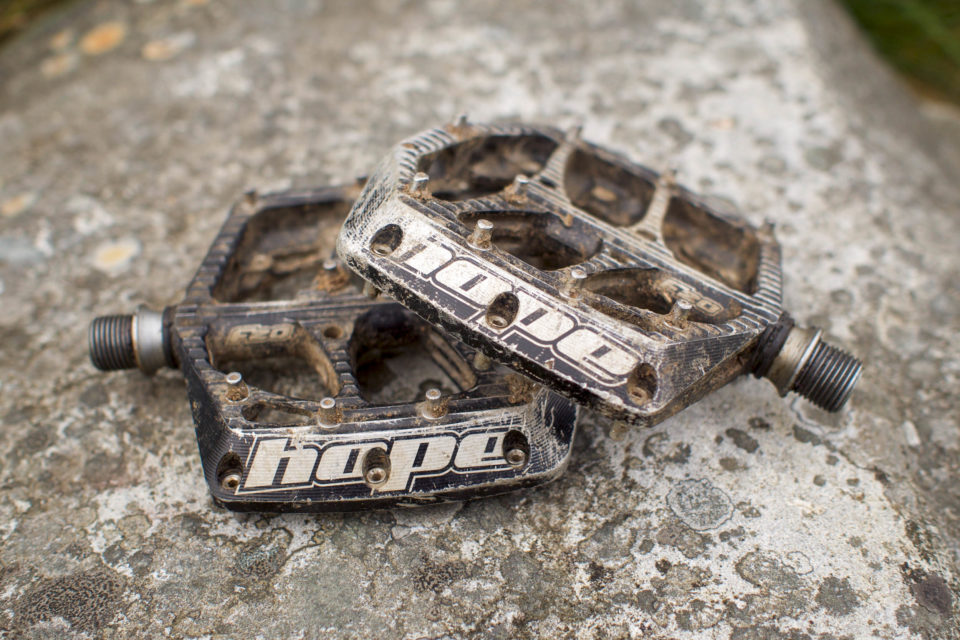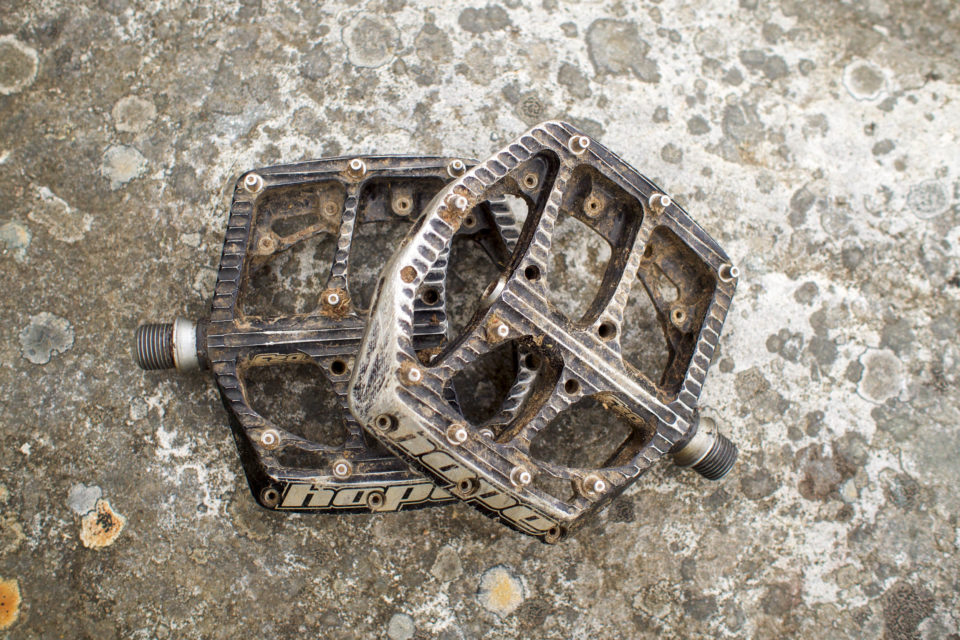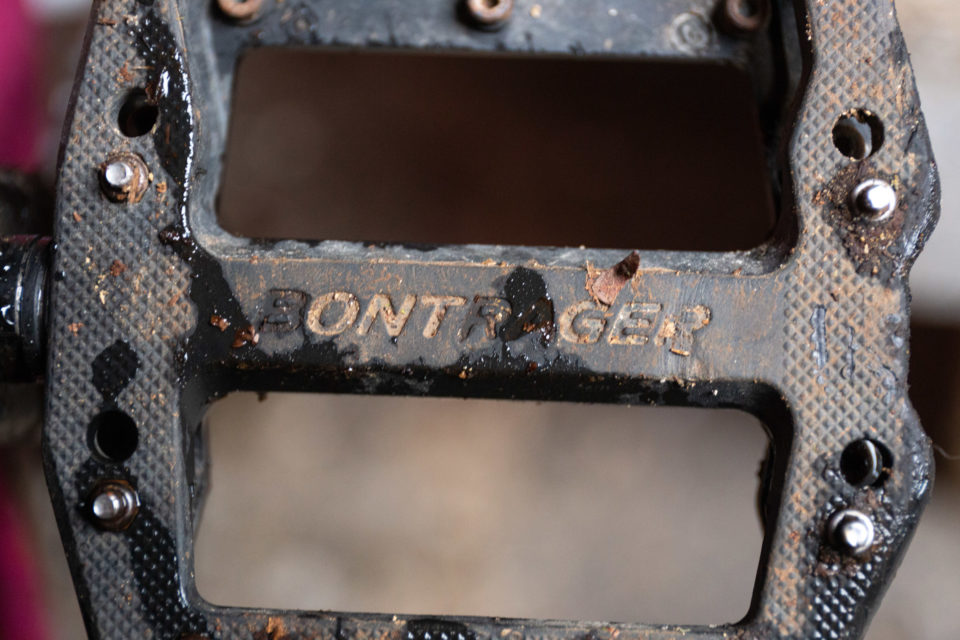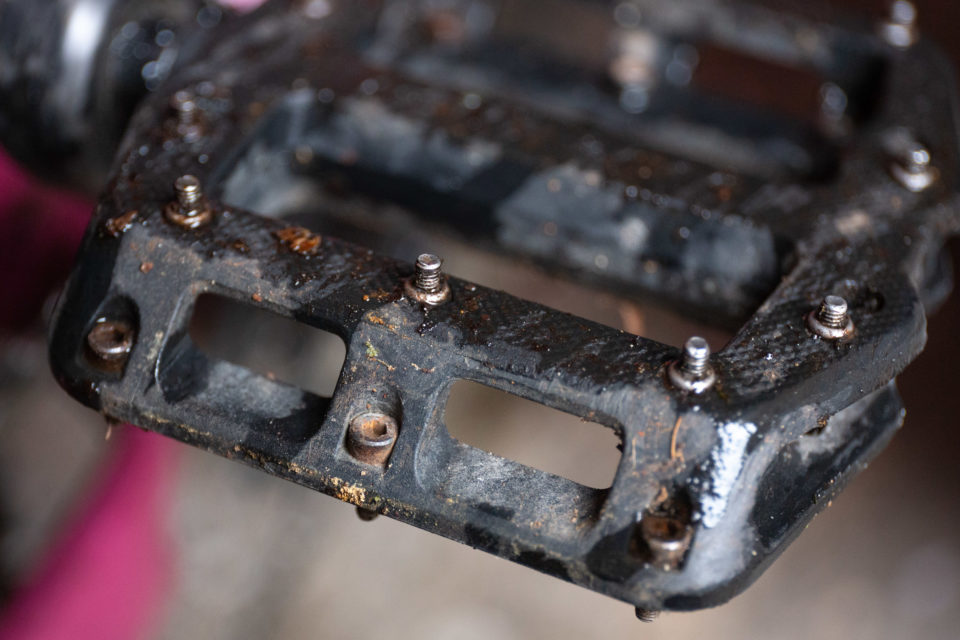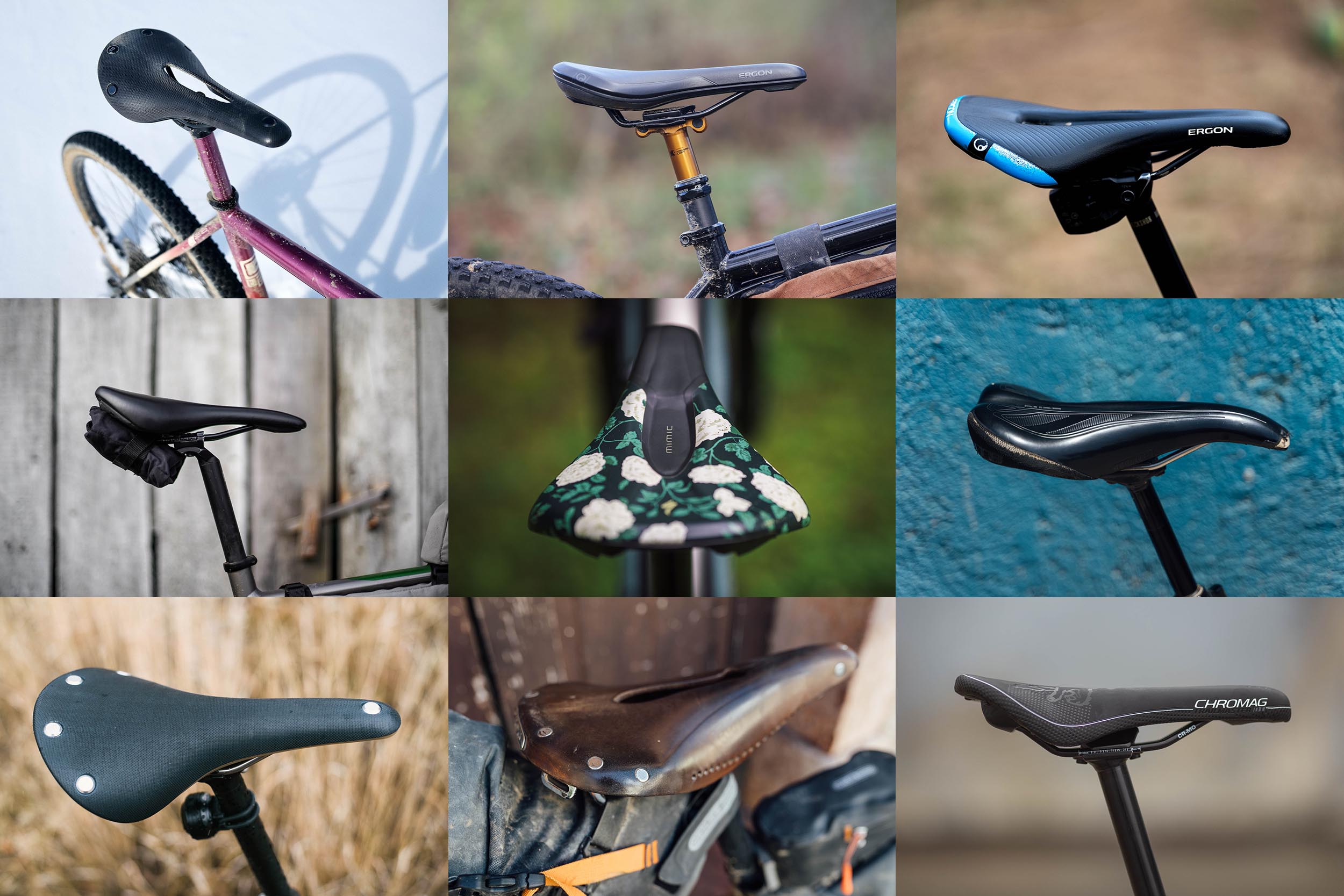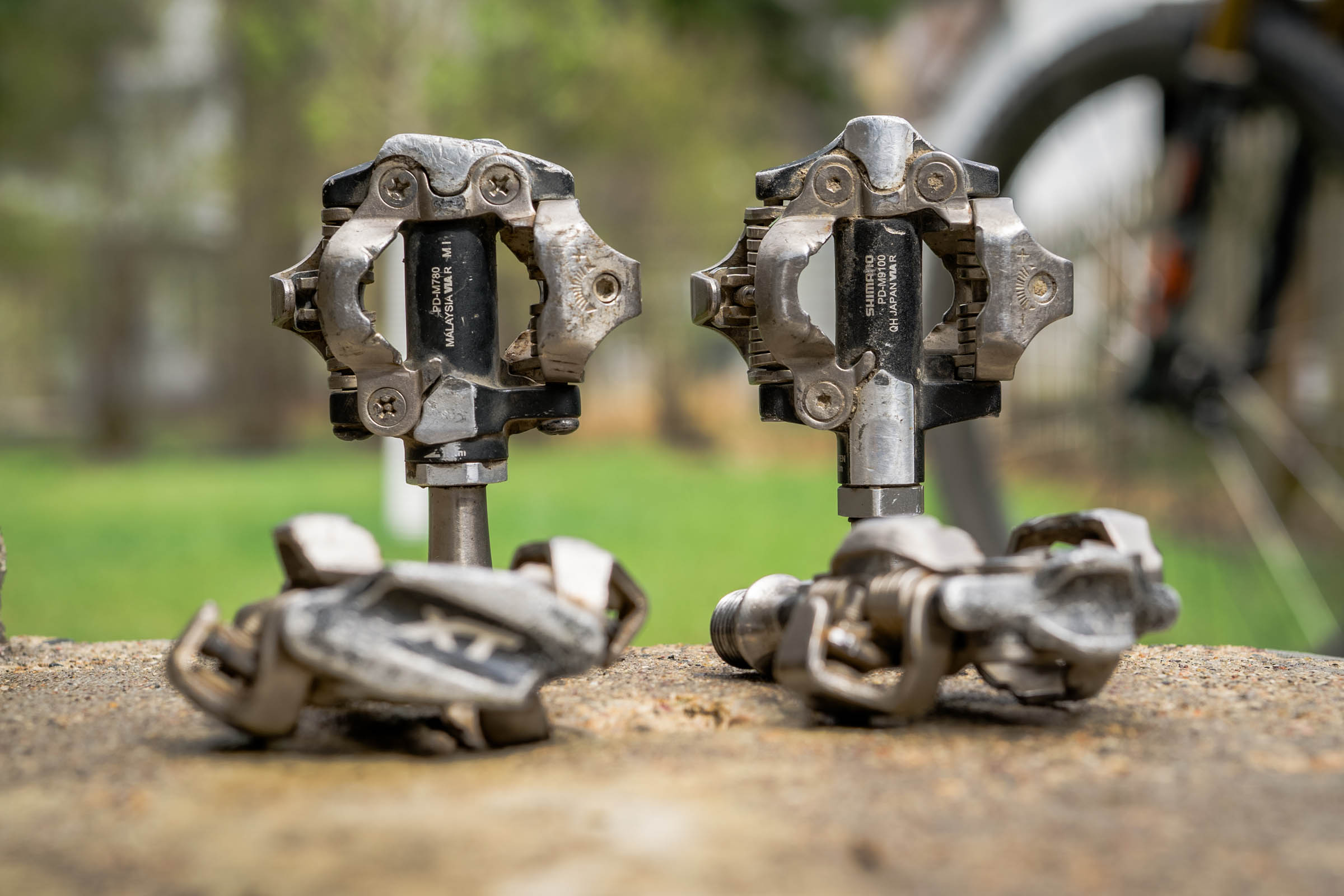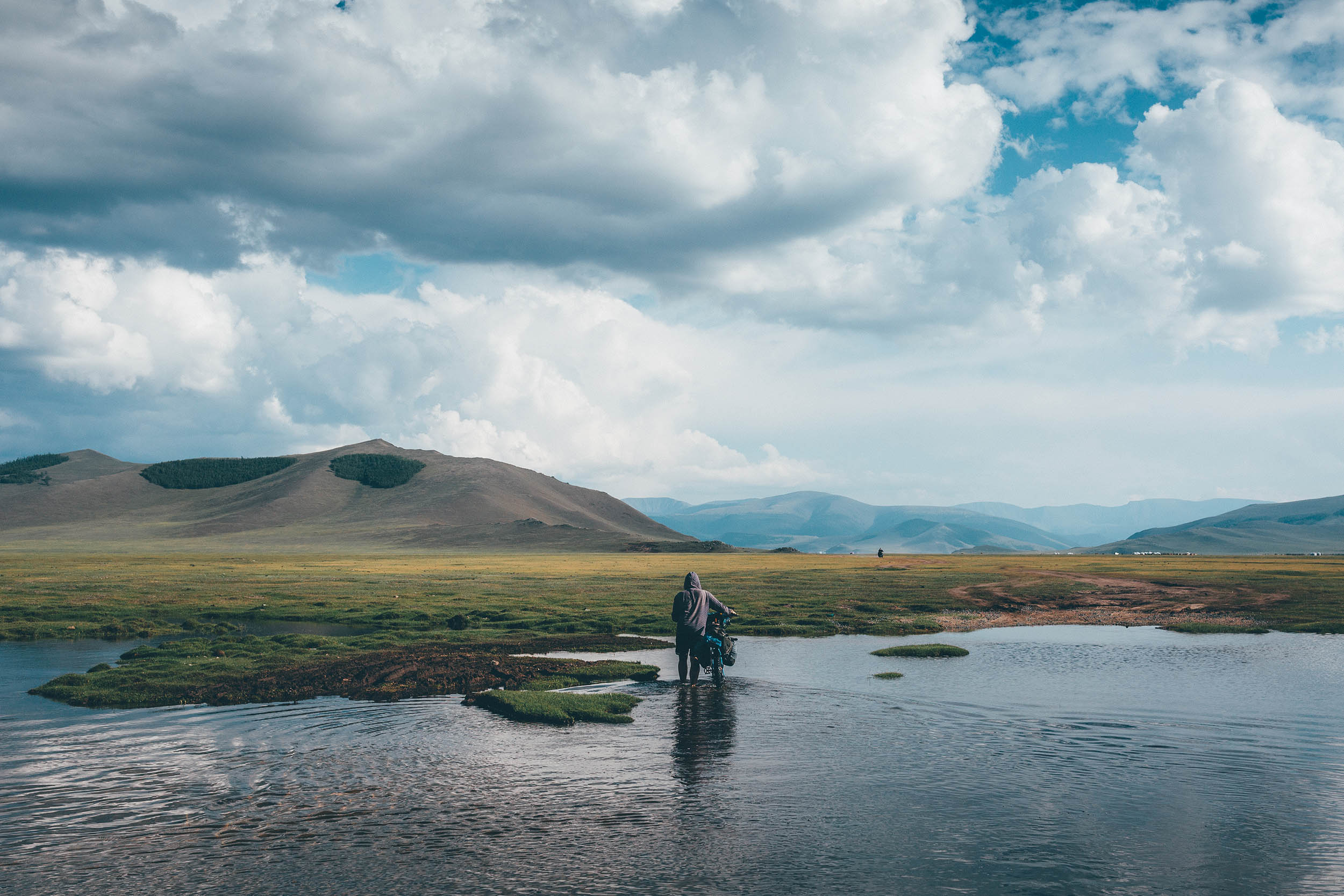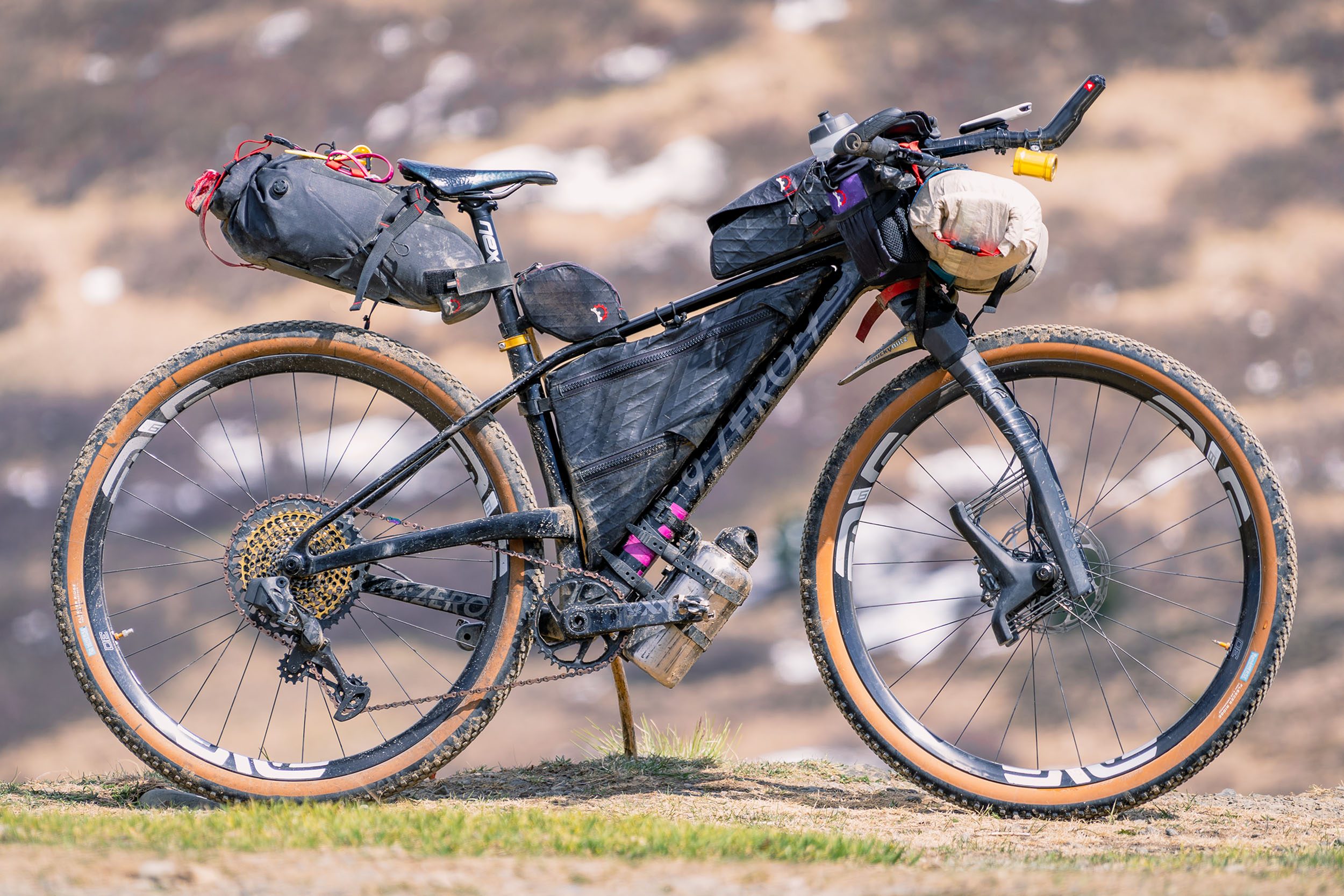The Best Pedals for Bikepacking? Our Editors’ All-time Favorites
In our ongoing Decade in Review series, we take a deep dive into the site’s 10-year archive and look back at the gear we’ve tried along the way, choosing our all-time top picks in a variety of categories. This time around, we share a bunch of our favorite time-tested pedals for bikepacking. Find the full list here…
PUBLISHED Jul 7, 2022
Commemorating the site’s 10-year history, we’re continuing our Decade in Review series in which we ask our editors and a rotating cast of friends to look back and share their all-time favorite gear from the hundreds of options they’ve tried and tested over untold miles on dirt roads and dusty trails. Following up on our roundup of favorite saddles (find that linked at the bottom of this post), we’re moving on to another highly personal touchpoint: pedals.
What are the best pedals for bikepacking? Should you run clipless or flat pedals? According to the folks we surveyed, which included around 10 more voices than you’ll read below—all with many years of bikepacking experience—there’s no clear answer to either question. It’s apparent that pedals are a little less personal and easier to agree on than saddles, but there’s hardly a consensus. Looking at the data, we can conclude that flat pedals are generally more favored than clipless, and Shimano and Hope were mentioned more often than any other brands among our group of 20 or so respondents.
Find our list of time-tested favorite bikepacking pedals below, including details on where each set is made, pricing, thoughts on what makes them stand out, links to find more details, and a few photos of each. Note that many of these pedals are available at your local bike shop, and we encourage you to buy them there if you can. If you don’t have access to a local shop, we’ve included links where they’re available online.
Hope F20
Cass Gilbert link
Made in the UK / Details / Price: $180
I’ve been running the same Hope F20 pedals on pretty much every trip since Logan sent me them back in 2016. Well, almost. Last year, I finally managed to break the end of the axle on one of them, during an especially protracted and demanding hike-a-bike. Hope sent me a replacement driveside pedal straight away, and given how well they’ve performed over the years prior to that incident (including the incalculable amount of times I’ve bashed them against rocks), I have no reason not to trust them implicitly, which is why I continue to use them on daily and remote trips alike.
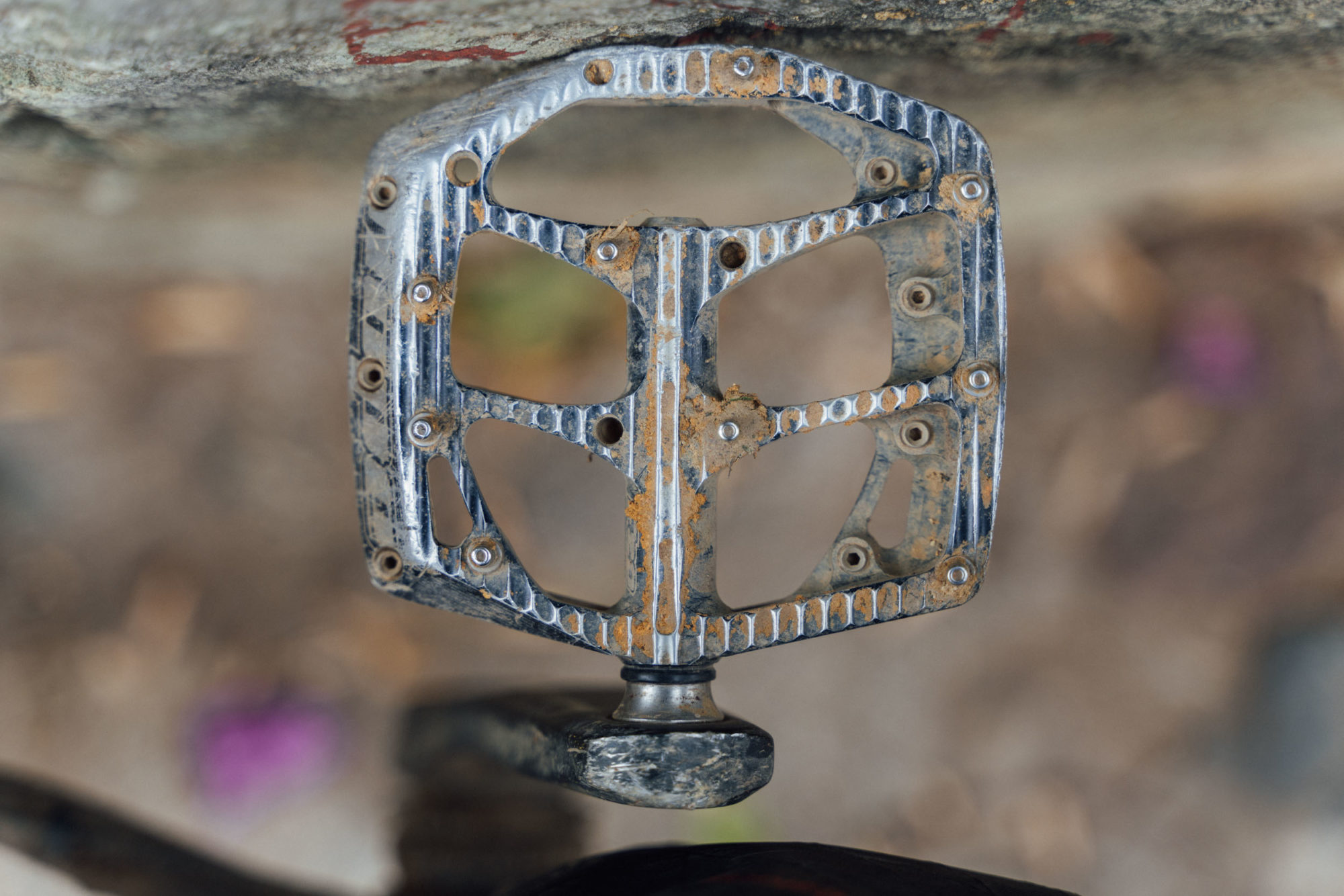
Yes, these pedals are spendy, especially compared to composite alternatives. But their all-round quality is nothing short of superb. The pins are adjustable in depth to suit your intended uses, and whilst they’ve softened over time, the pedals are still amply grippy for technical trail riding, even with a couple of talons missing. Most surprisingly, the bearings are still running ridiculously smoothly, with absolutely zero play at all. And I mean zero!
I love the overall size, width, and shape of these pedals, and how nicely their subtly concave shape cups my feet, whether I’m wearing my Five Ten trail shoes or a pair of Bedrock sandals (for reference purposes, I’m a size 44).
Shimano XTR M9100
Neil Beltchenko link
Made in Japan / Details / Price: $180 at Backcountry
Ever since I started mountain biking seriously back in 2012, I’ve always been a clipless fan. I like the consistent pedal stroke and the feeling you get when you clip in. After having some Time and Crank Brothers pedals fail on me, I moved on to Shimano, and I haven’t looked back. Over the years, I’ve used a lot of Shimano pedals: M540, M780, M8000, M8100, M9000, and M9100. I actually still own all of the Shimano pedals I’ve ever purchased, and they all still work. This is largely because of their durability, but it’s also due to their serviceability.
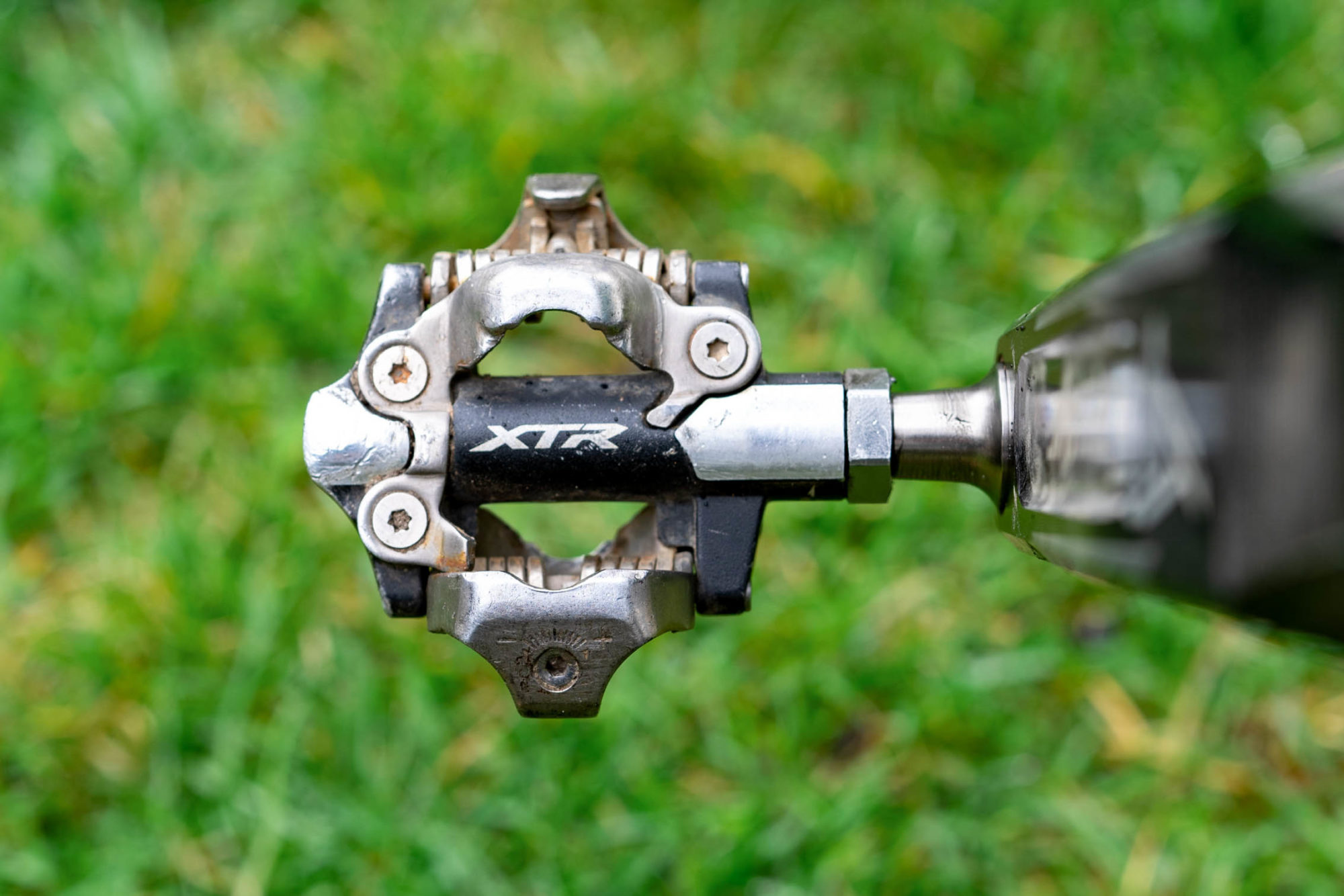
As of late, I’m really enjoying the newish M9100 race pedals, and the big improvement here is they actually shed mud much better than the previous XTR M9000 and the newer XT M8100 pedal as they come with a smaller axle body. Shimano also upgraded the axle and bearing as well as creating a bit more surface area for your shoe to contact. It’s also hard to ignore the cleats that Shimano pedals come with, as a set of cleats typically lasts me the length of my shoes.
After using the Shimano M9100 pedals for more than three years now, I’m extremely pleased with their performance, durability, and consistency. I’ve repacked grease in them once, and they continue to perform as if they were right out of the box. The Shimano M9100 pedal set is hands down one of the most reliable pieces of gear I currently own.
OneUp Components Aluminum Pedals
Pepper Cook instagram
Made in Taiwan / Details / Price: $112 at Backcountry
One of my all-time favorite and most trustworthy pedal choices for bikepacking is the OneUp Aluminum Pedals. They’re a flat pedal that I have favored for several years for several reasons. First, they come in super fun anodized colors. Second, they have exceptionally nice pins that don’t damage to my shoes but still keep my feet glued to the pedals. I also like them for bikerafting and bikepacking missions because they are removable using an Allen key.
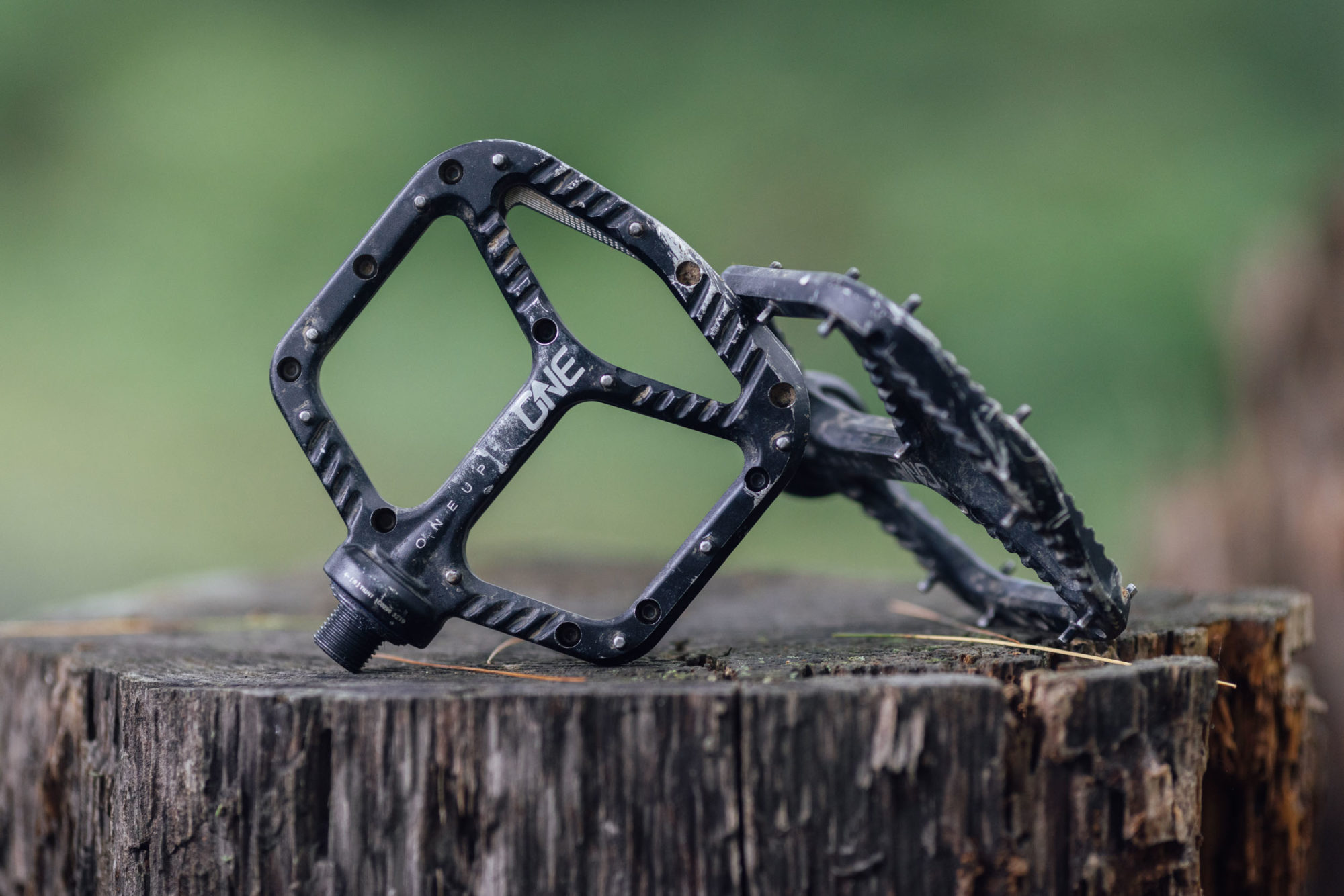
For a durable metal pedal, they’re fairly lightweight, and they have a super low profile so you can’t feel the spindle in your arch, which has bothered me on other pedals I’ve tried. Another great bonus is that they’re serviceable and the kits are inexpensive, so after a few grubby trips, you can take them apart and regrease/replace the innards. Lastly, I have had great customer service experiences with the folks at OneUp, which goes a long way if you tend to be a gear destroyer like me.
Shimano DEORE XT (Race and XC)
Lucas Winzenburg link
Made in Malaysia / Details / Price: $125 at Jenson
They’re a somewhat unimaginative choice, but in my experience, when it comes to durability and reliability, Shimano’s Deore XT pedals offer unparalleled bang for the buck. They’re incredibly hardwearing, not exorbitantly priced for what they deliver, and have a reasonable weight (342g for a pair of M8100s) and size that make them fairly unobtrusive. I have a mix of M780 (Race) and M8000/M8100 (XC) pedals mounted to most of my bikes, and they’ve earned their place as my go-to pedals for bikepacking, commuting, and day rides after plenty of trial and error with clipless pedals from other brands, including Time, ISSI, and MKS, to name a few.
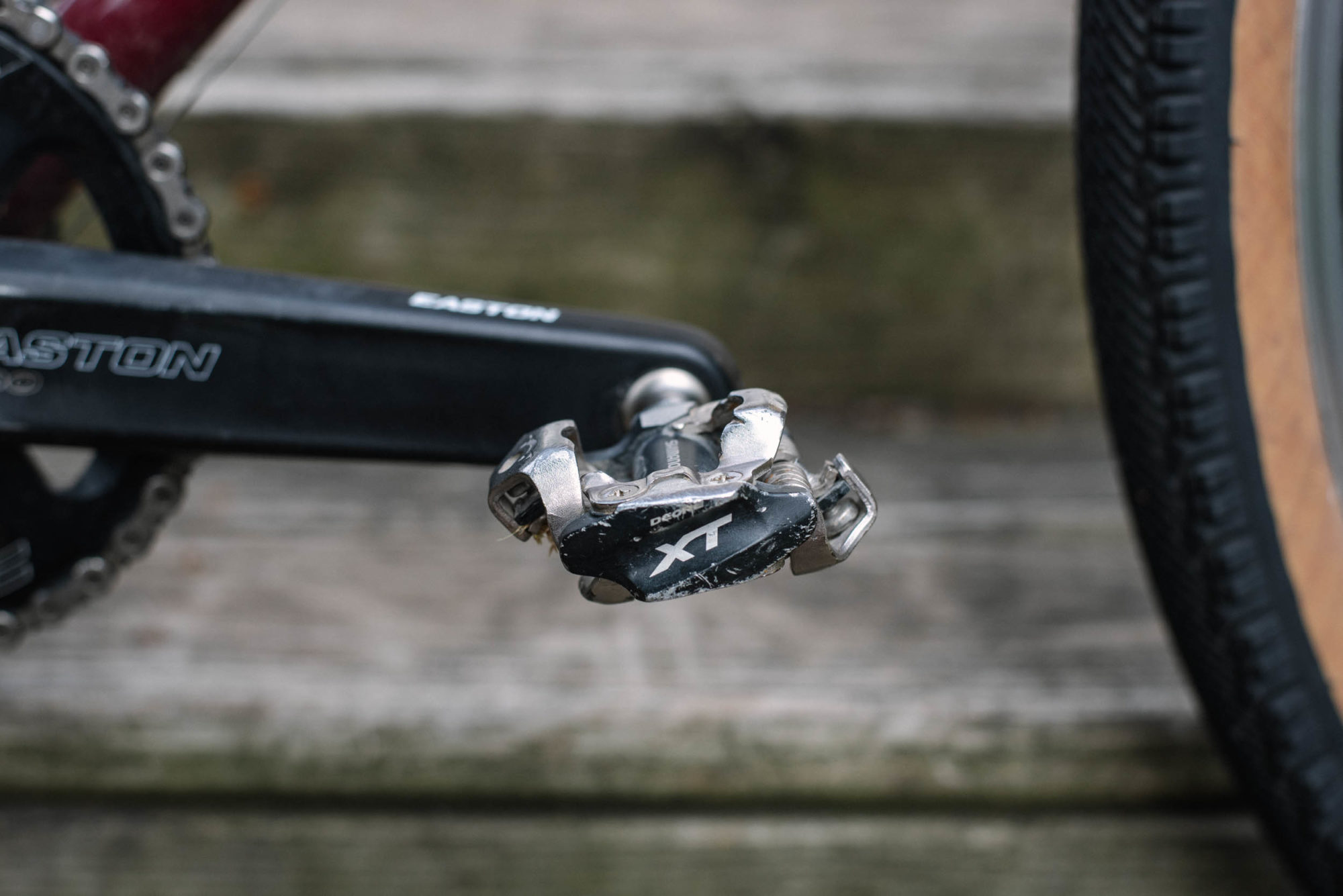
In the decade or so that I’ve been running Shimano XT SPD pedals, I haven’t had to perform anything beyond routine maintenance on any of them, and even my oldest and most well-traveled pair is still going strong, despite being beat to hell. Clipping in and out is smooth and requires just the right amount of effort in the factory setting. I’ve found that pedals from other brands usually require a good amount of fiddling to adjust them so they aren’t too tight or loose. They shed mud and grime quite well without much fuss, too. In short, they’re almost transparent when in use, and I have complete confidence in them whenever I set out on a ride, which is all I can ask of pedals.
MKS Lambda
Joe Cruz link
Made in Japan / Details / Price: $60
The Mikashima Industrial Company Limited was established in 1943 as an aircraft component manufacturer and switched to making pedals in 1946. Their pedals come in a splendid variety and are admired the world over for durability, serviceability, and utilitarian design. For many of their pedals, looking at them is to have reflected one’s archetype and exemplar of the very idea of a pedal, as if MKS pulled something out of our imagination rather than the other way around.
My all-time favorite classic pedal is MKS’s Lambda, developed with Rivendell Bicycle works and also sold by Rivendell under the “Grip King” name. No, the Lambdas aren’t on all of my bikes, and if we rode together there is a decent chance you’d see me on a flat pedal like the Spank Oozy 2.0 or a clipless pedal like Time’s XC12. Those latter two are excellent but they are not yet the classic that the Lambda is.
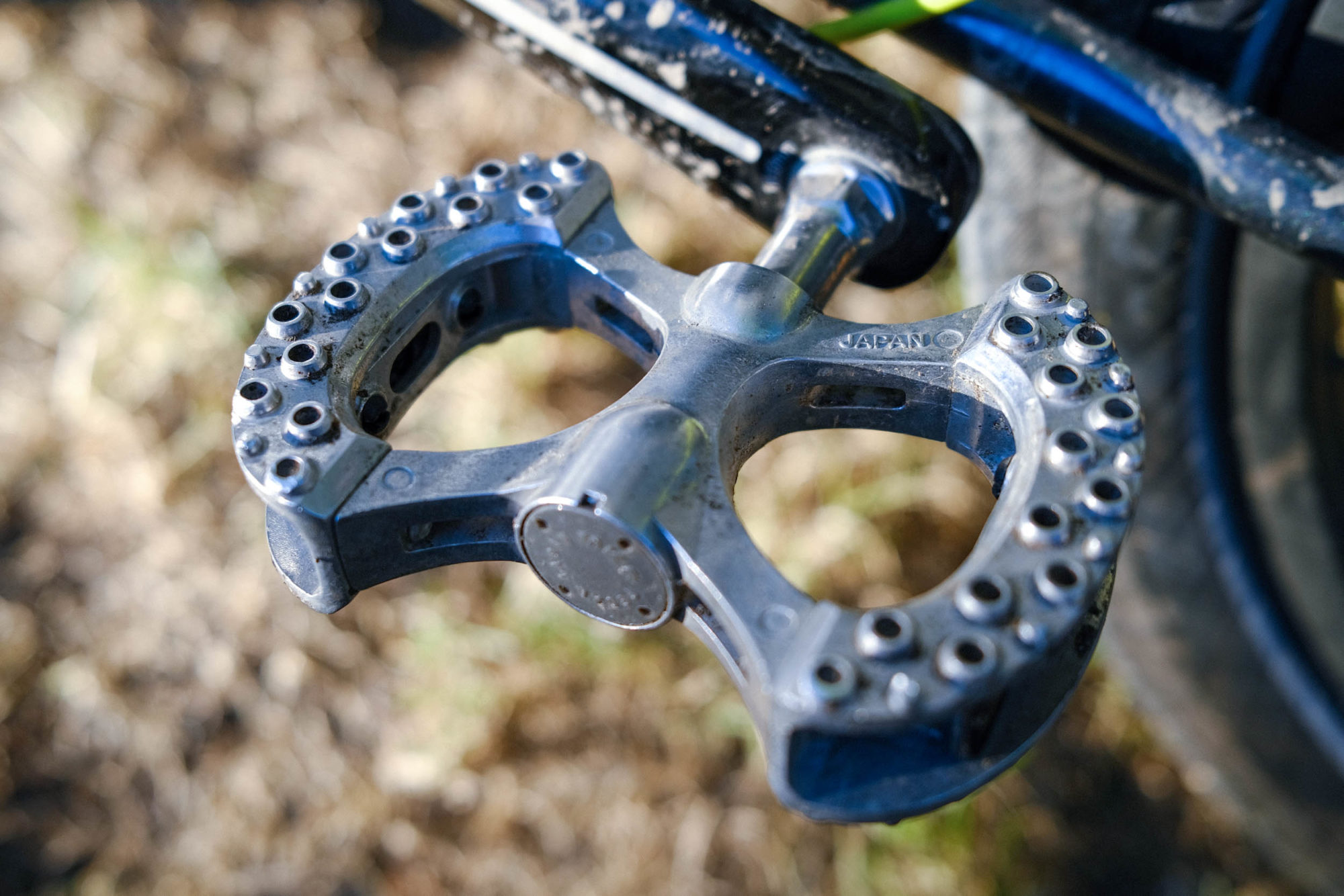
MKS Lambdas give me enough grip to ride with confidence under a thousand conditions, singletrack to washboard road to city commute. They’re the right size—a large surface area for my size 9 shoe, but narrow enough to ride through deep donkey ruts. They don’t have skin and shoe-destroying pins, which I mostly don’t feel are necessary when bikepacking. The octopus suction cup surface interfaces well with all manner of footwear. And they take on anything, pedal stroke and abusive strike and whack and spin. I rode on Lambdas the length of South America on a fat bike, and if I set out on that trip tomorrow, I’d probably put the very same pair back on whatever bike I was riding.
Best hack you’ll read in this article: get a pair of Lambda Ezy-Superiors, the quick-release version of the Lambdas. When you’re hike-a-biking, pull off the non-drive-side pedal to walk along your bicycle and not have it keep hitting your shin. And yeah, I get it that not having pins is a nonstarter for many. Check out Rivendell’s newer Grip Monarch if that describes you, or consult the internet for how to add pins to your Lambdas. For me, they’re the pedals that just work and boom to any occasion. It’s fun that they look like some sort of battle axe, too.
SHIMANO DEORE XT/XTR Trail (PD-M8120/M9120)
Virginia Krabill link
Made in Malaysia (XT), Japan (XTR) / Details / $130-190 at REI: M8120, M9120
I also usually use OneUp Composite pedals for longer trips as I generally wear flats on that type of excursion. However, when trail riding, weekend romping, or heading out on an overnighter on my trail bike, I usually leave the clipless pedals on. It was just a three or four of years ago when I switched to Shimano SPDs. That was after using Crankbrothers pedals for over a decade. The biggest perk was the durability of cleats—they seem to last five times as long as the brass ones from Crankbrothers—but there are a few other things to like about Shimano’s mountain bike SPDs. For one, they seem ultra-reliable. They also have adjustable spring tension engagement screws, so you can tune them to be easy to get out of if you’re not a super rowdy rider, more so than is possible with other pedals I’ve used.
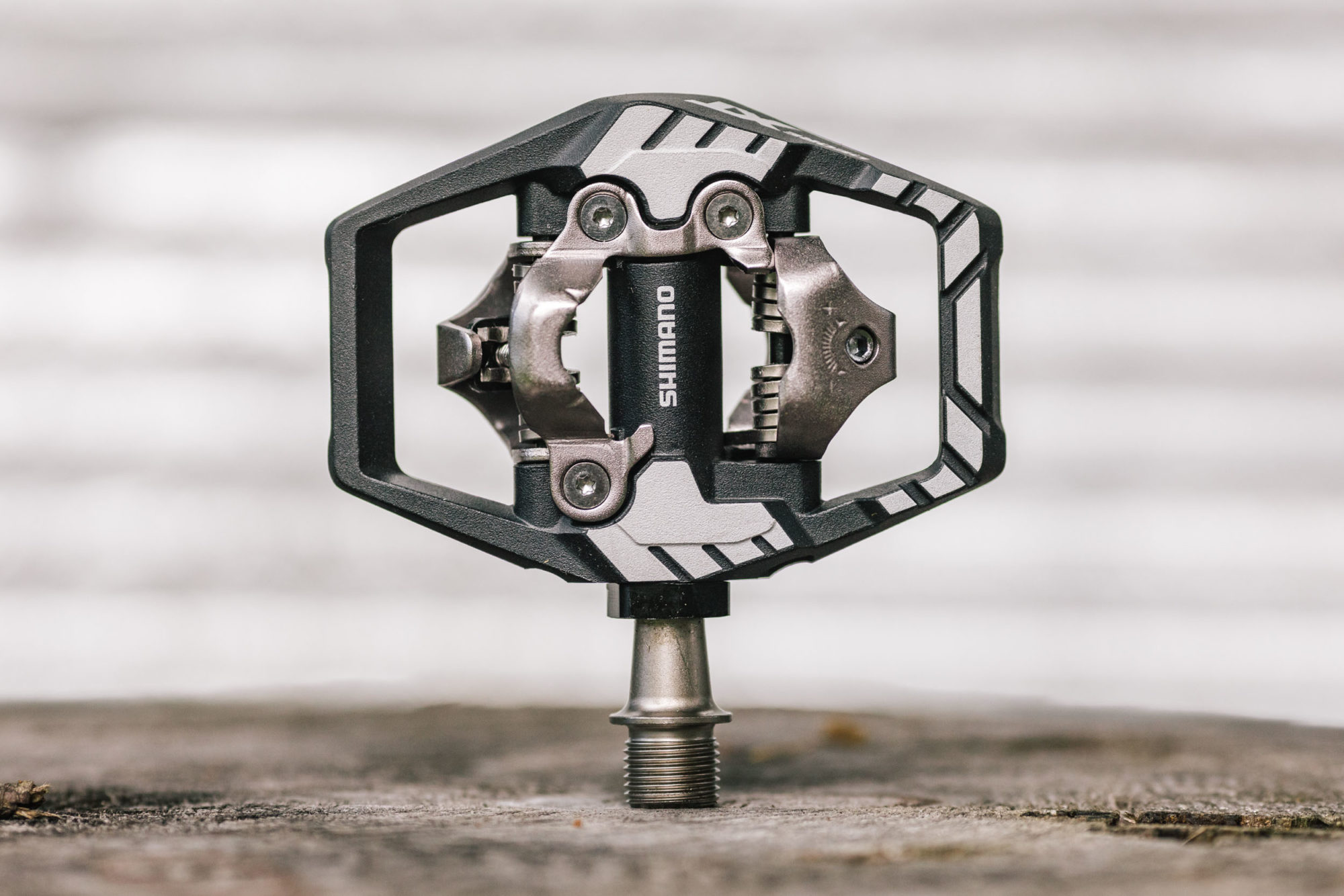
I rode with the more minimal and lightweight platformless PD-M8100 for a while and liked them. However, I occasionally had a little discomfort and some numbness in my feet when trail riding. This year, I switched to the PD-M8120, Shimano’s XT sibling that features fore and aft wing-like platforms. Since making the switch, I haven’t experienced that discomfort or numbness. I also feel like they offer a little more of a solid foothold that adds a bit of oomph on ascents and stability on the descents.
OneUp Components Composite Pedals
Logan Watts link
Made in Taiwan / Details / $40 at Jenson
Plastic pedals for bikepacking!? That’s what I thought when I first heard about OneUp’s Composite pedals, as well as similar offerings from other brands. However, fast forward a half-dozen years—after trying A LOT of pedals—and these $40-50 pedals are almost all I use, and the only pedal I trust for big bikepacking trips.
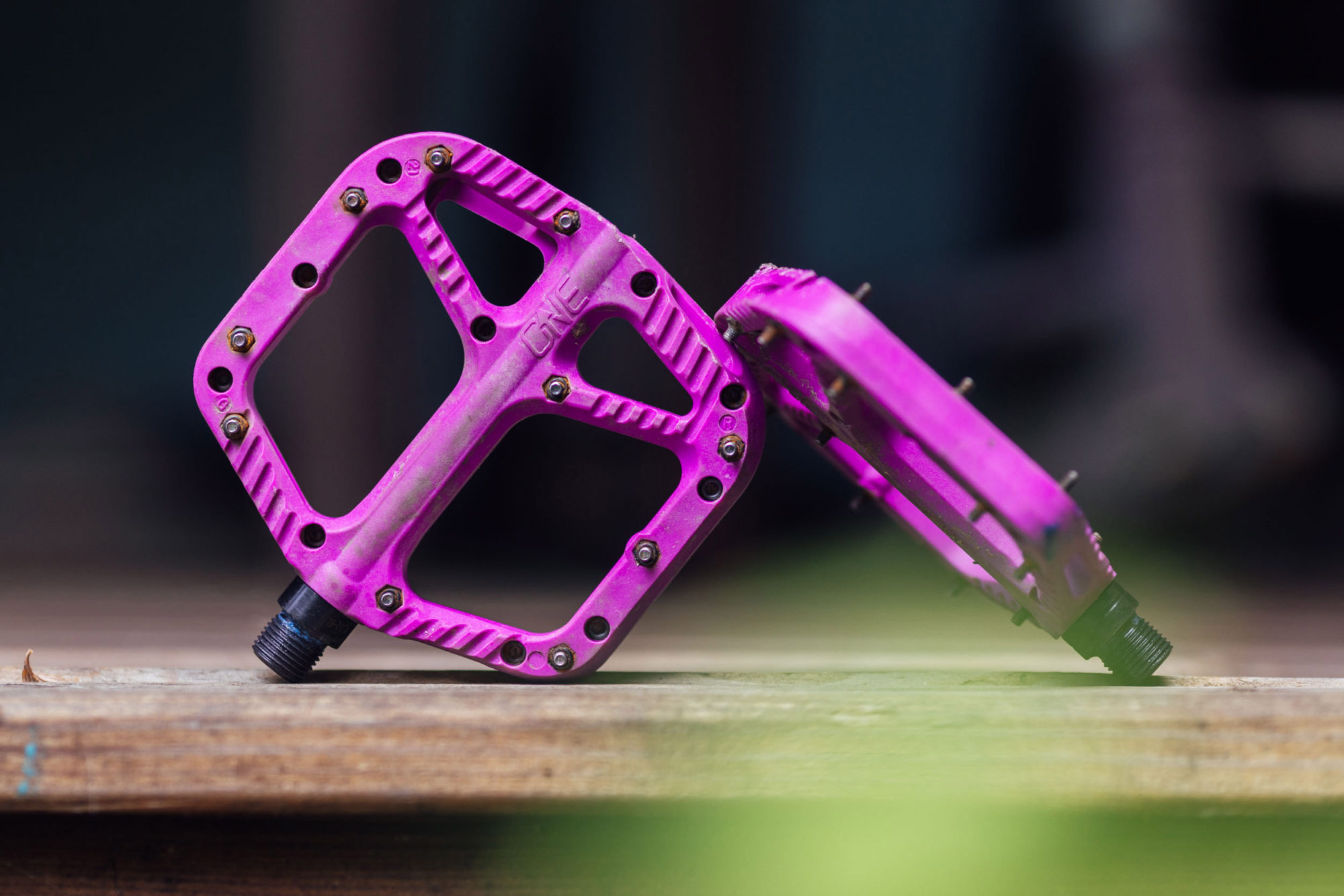
I now have a couple of pairs of OneUp Composites that have survived over 3,000 miles—probably closer to 4,000—and are still going. I have one pair that ultimately endured bikepacking and trail riding in Armenia, Colorado, New Mexico, and countless rides around Pisgah, and they’re still running smoothly. OneUp nailed the size and pin placement of these pedals. They aren’t too wide and they’re not too small. I’ve tried a lot of other pedals and these have superior grip to most options. In fact, every time I try others, I wish for the OneUps. And as a bonus, they come in my favorite color, purple.
For the record, I’ve also used OneUp’s alloy pedals. They have a similar feel, but I’ve had one fail. I don’t think they’re necessarily prone to failure, but I absolutely trust the Composite version based on its simpler construction with the lock nut on the outside; the alloy version uses a different spindle and construction to lock it internally.
Hope F20
Annie Le instagram
Made in UK / Details Price: $180
I’ve been using Hope’s F20 Pedals since 2016 when I wanted some reliable and comfortable flats for a long tour in Iceland. I don’t ask much from pedals, having used a bunch of cheap plastic sets over the years. But for a long, remote tour, I really wanted something that I could trust.
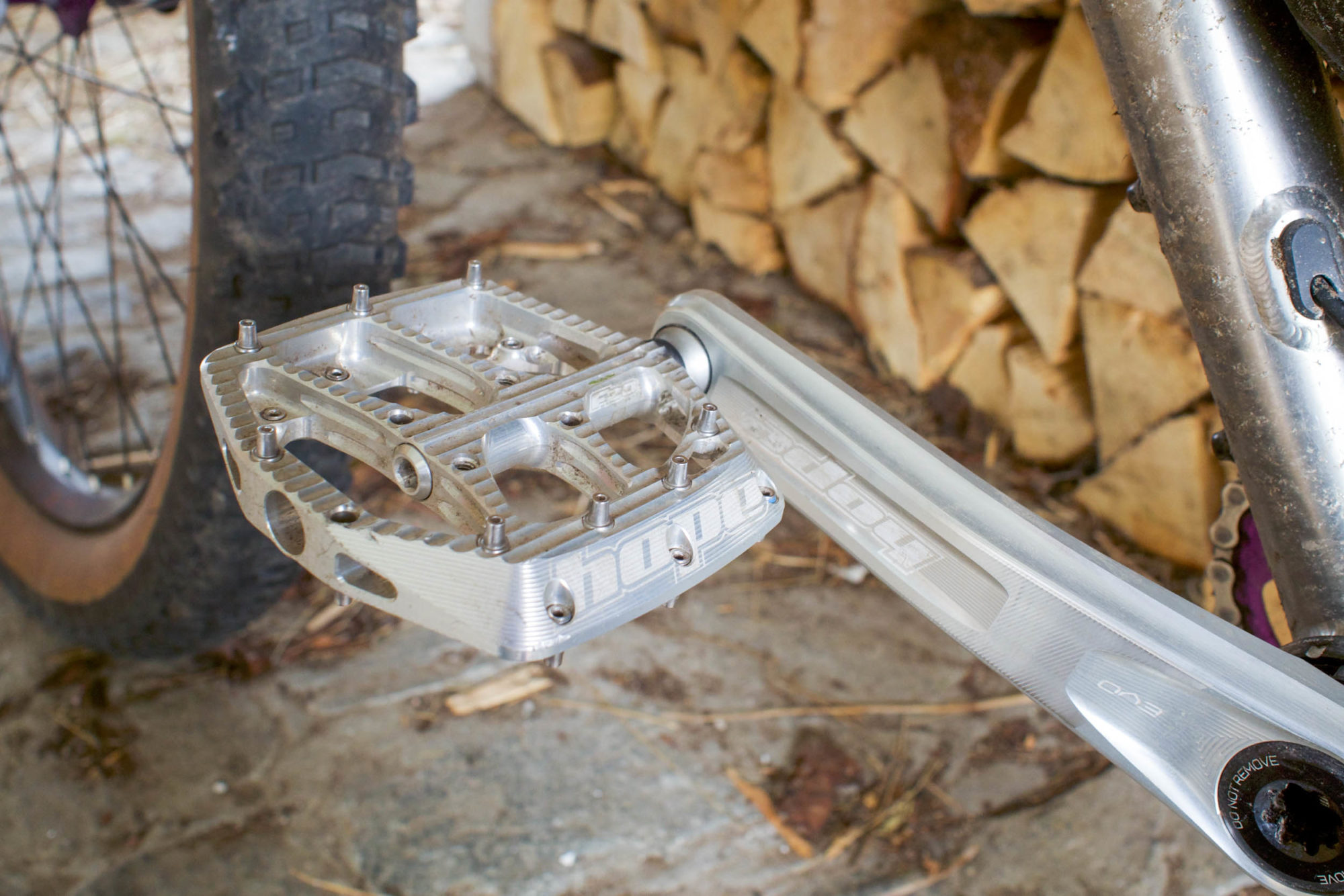
The F20s are CNC machined from aluminium and have an industrial look that I love. They come in a variety of anodised colours to suit your fancy. They also come with 20 replaceable pins that you need to screw in yourself. This might well annoy some people, especially given that these are at the pricey end of the market. However, I enjoy the ability to customise the pins to my needs. I use fewer pins for mellow tours, but can easily chuck an extra couple in for more grip when I’m at home and doing gnarly (for me) day rides. The platform feels plenty wide enough for my feet, and I’ve found them to be comfortable in several multi-day bikepacking races in which I’ve ridden upwards of 18 hours a day.
Over thousands of miles of use, these pedals have only had a single bearing change/service, and although they have the scars and souvenirs of many trips, they still feel mechanically new. I recently got a second set, in fact, so that I don’t have to swap them between bikes, but it’s nice to know that they’re probably the last set I will ever get as they are so serviceable. No doubt, they will probably last longer than my knees! Although these are more expensive than other options, my experience is that they will prove their worth over the years.
Bontrager Line Elite MTB Pedals
Miles Arbour link
Made in China / Details / Price: $52 at REI
When I was asked to choose my favourite pedals, I immediately thought of my 10-year-old clipless Shimano XTs. They’ve proven to be virtually bombproof and probably stand out in my mind because some of my most fun riding happens when I’m clipped in. However, I’ve been switching my set of Bontrager Line Elite pedals between bikes for just as long, and they to refuse to give up. They are the flat pedals I reached for when Emily got herself a new bike or when I’m testing flat-pedal shoes for the site. I’m pretty sure I’ve never serviced them in that time, either.
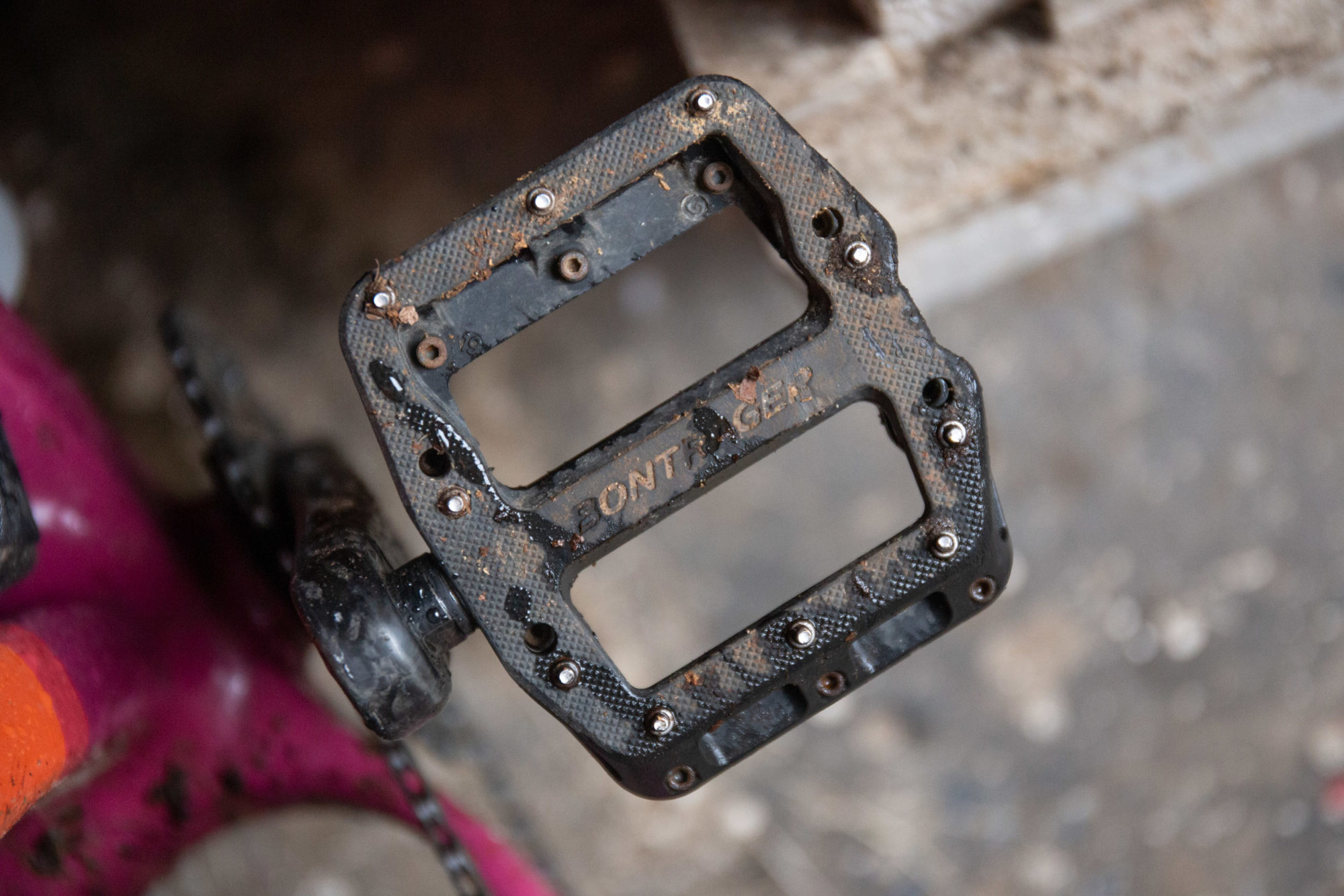
The Line Elite MTB pedals are made from a durable nylon resin platform with ten replaceable steel pins, sealed cartridge bearings, and can be installed with either 6mm hex or standard 15mm pedal wrench. The nylon body shakes off big impacts and also sheds mud and dirt thanks to the large openings on either side of the pedal axle. Traction is adequate in most situations and, due to their reasonable price tag, I’d recommend them to anyone looking for a no-frills flat pedal for bikepacking, trail riding, and everyday use.
What are your favorite bikepacking pedals, and what do you like about them? Let us know in the conversation below!
Related Content
Make sure to dig into these related articles for more info...
Please keep the conversation civil, constructive, and inclusive, or your comment will be removed.







